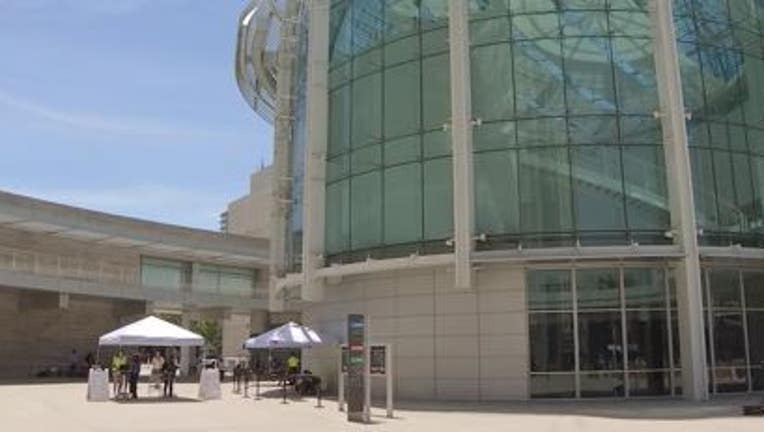San Jose, other Bay Area cities rank among top for COVID-19 vaccinations in the U.S.

Vaccination site in San Jose, Calif.
SAN JOSE, Calif. - New data shows the San Jose metro area not only had the nation's highest percentage of residents vaccinated against COVID-19, but it’s also among the leaders for lowest rates of new cases.
The site, Covid Act Now, which offers real-time trackers on vaccinations, placed San Jose at the top with 66% of residents in the area having received at least one dose of the vaccine.
Also making in the top ten were the San Francisco, Napa and Santa Cruz metro areas, coming in 4th, 5th, and 9th respectively.
The site, which also offers up-to-date information on COVID-19 cases, listed the Santa Cruz metro area in 4th place for the lowest rate of daily new cases, with 0.9 new cases per 100,000 residents.
San Jose came in 8th place with 1.7 daily cases per 100,000 residents, and the Salinas metro area followed with 1.8 daily new cases.
SEE ALSO: California to drop social distancing requirements when state reopens mid-June
Researchers also reported quantifiable progress across the U.S. in the pandemic fight in recent weeks.
"Over the last 14 days, daily new cases have decreased by about 38% and daily new deaths have decreased by about 17%," the site said. In addition, figures showed almost half of the U.S. population has received at least one dose of the vaccine.
Covid Act Now also provides real-time information a region’s infection rate and positive test rate. Using those categories as well as data on the daily new cases, it assesses an area's overall COVID-19 risk level.
SEE ALSO: Bay Area guide to COVID-19 rules: What each county allows
Since March, the entire state of California has been at a yellow "medium risk" level, the second to lowest risk on the Covid Act Now scale.
"We help people make informed decisions by providing timely and accurate data about COVID in the U.S.," the group said on its website.
Covid Act Now was founded by volunteers at the start of the pandemic in March 2020. The non-profit works in partnership with Stanford University Clinical Excellence Research Center, Harvard Global Health Institute, and Georgetown University Center for Global Health Science and Security.
Researchers use data from sources including the Centers for Disease Control and Prevention, the U.S. Department of Health and Human Services, and official state and county dashboards.

